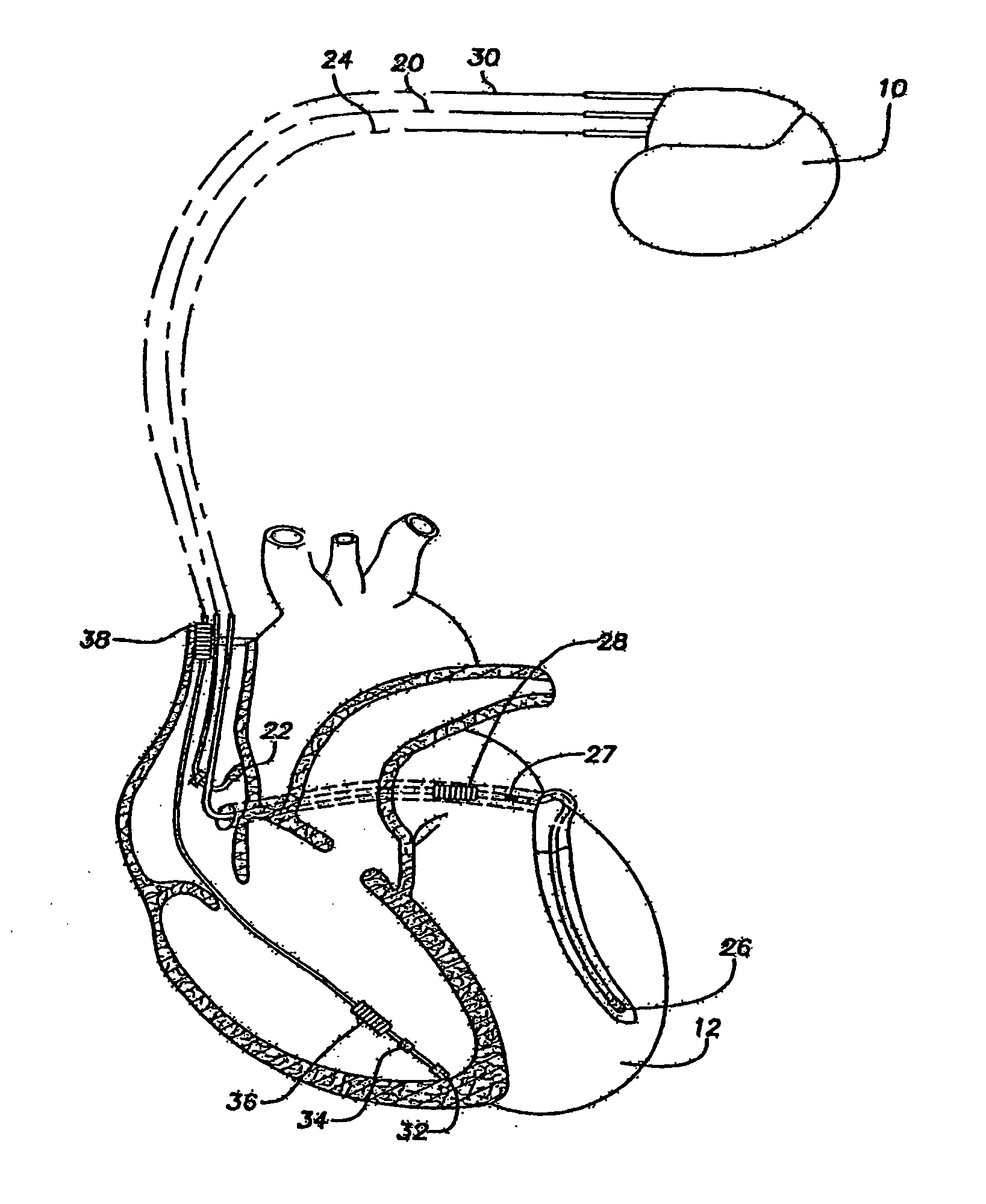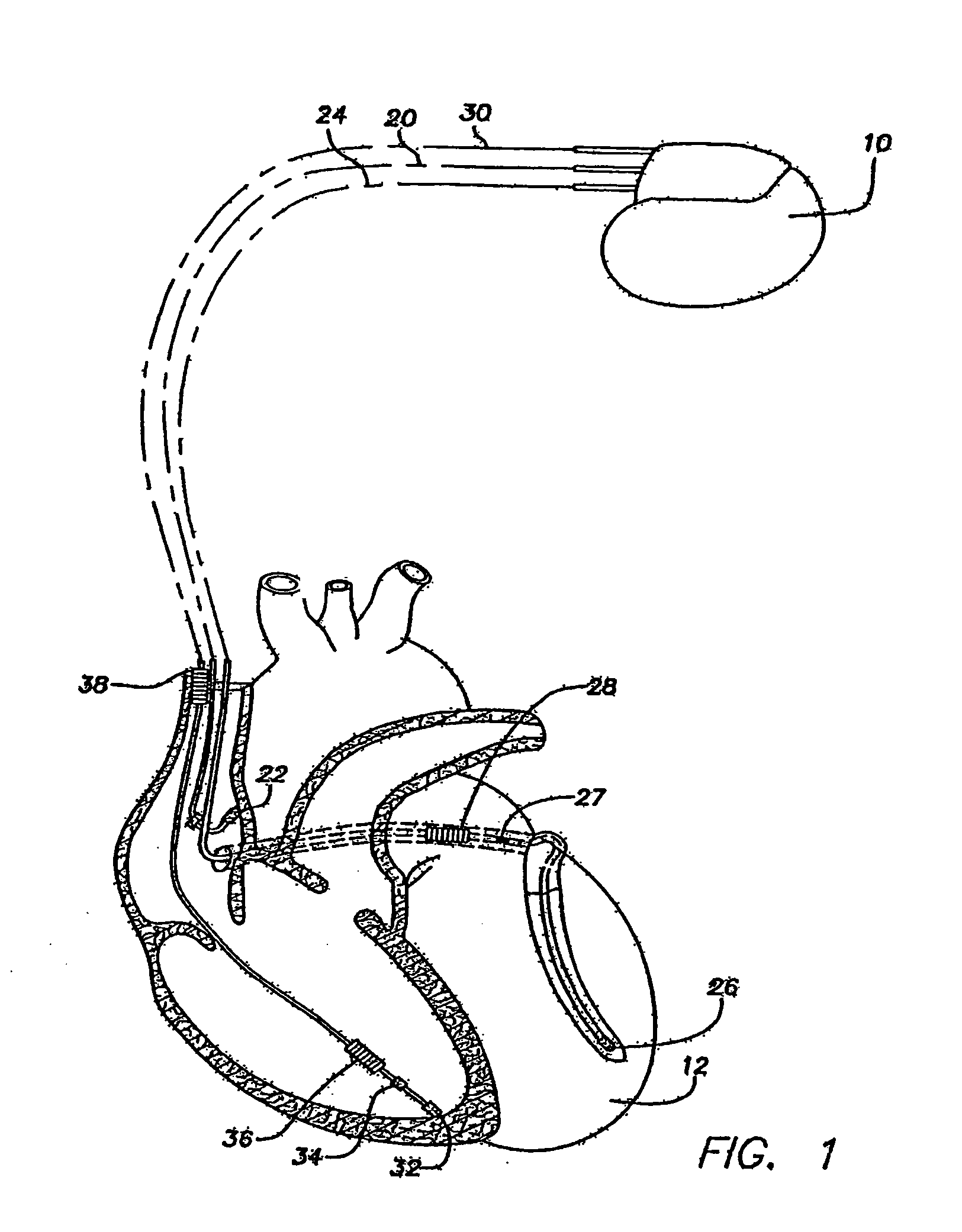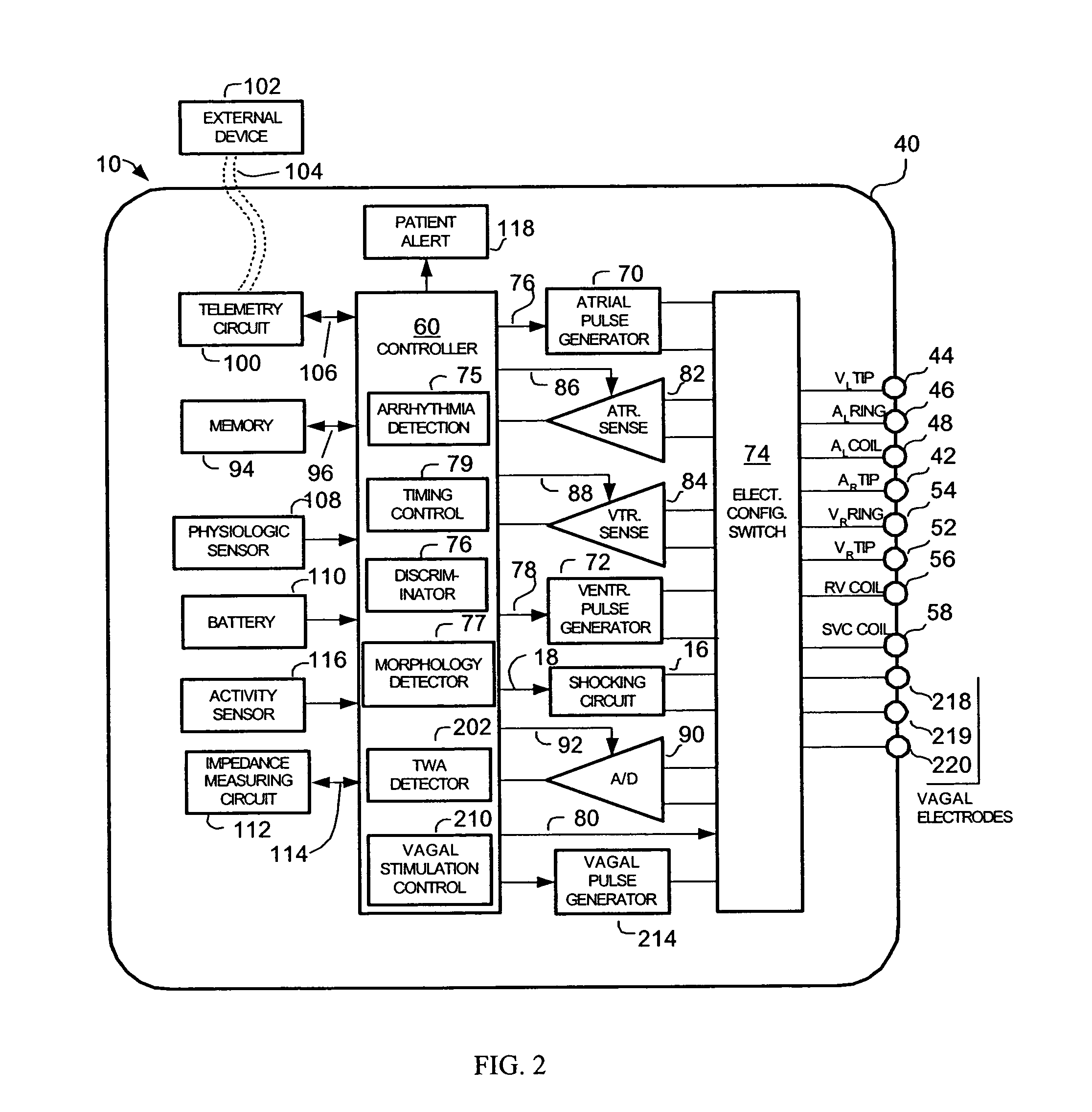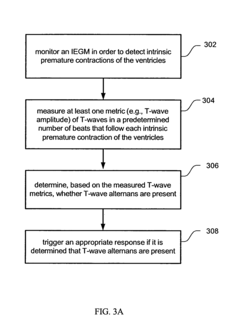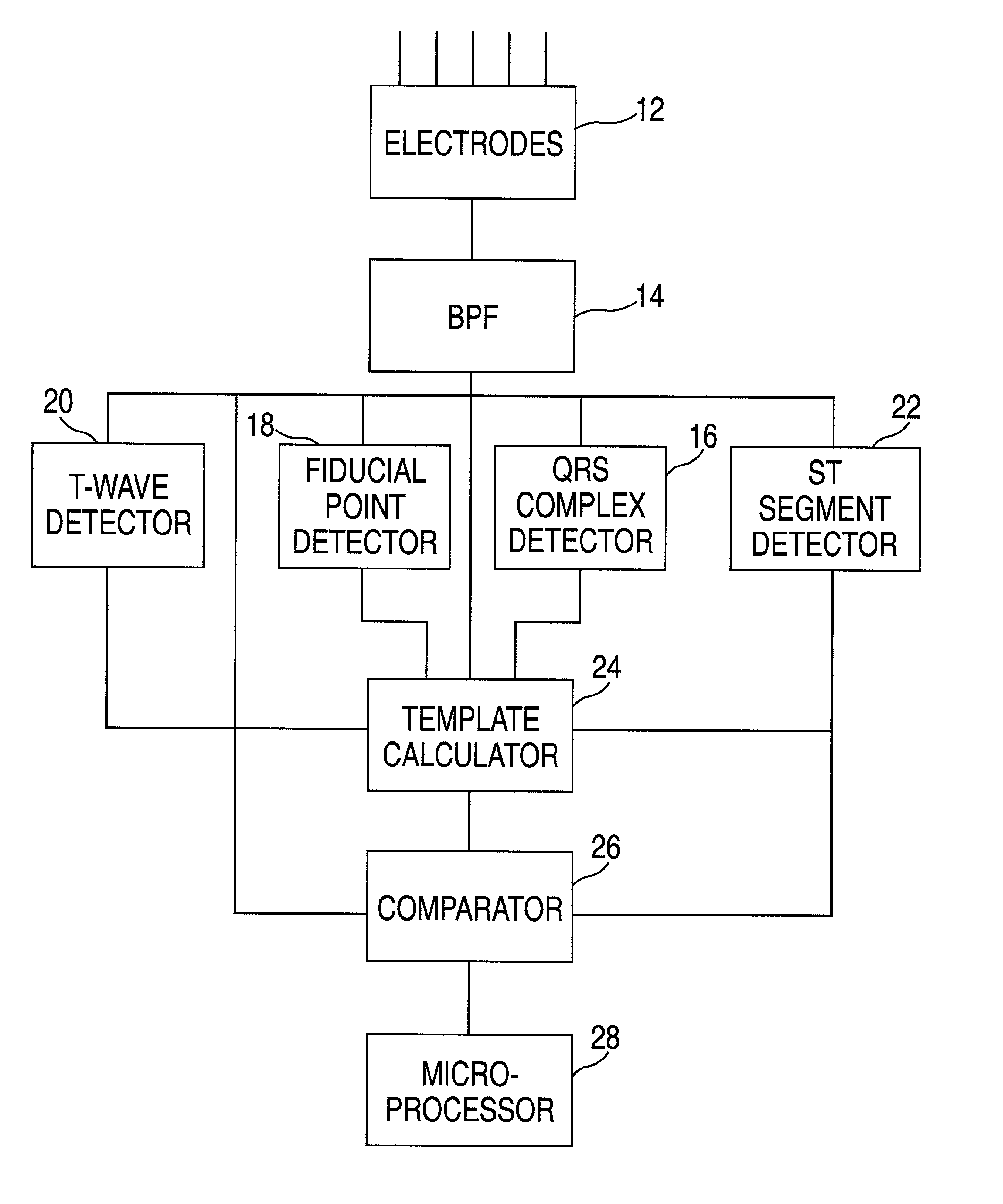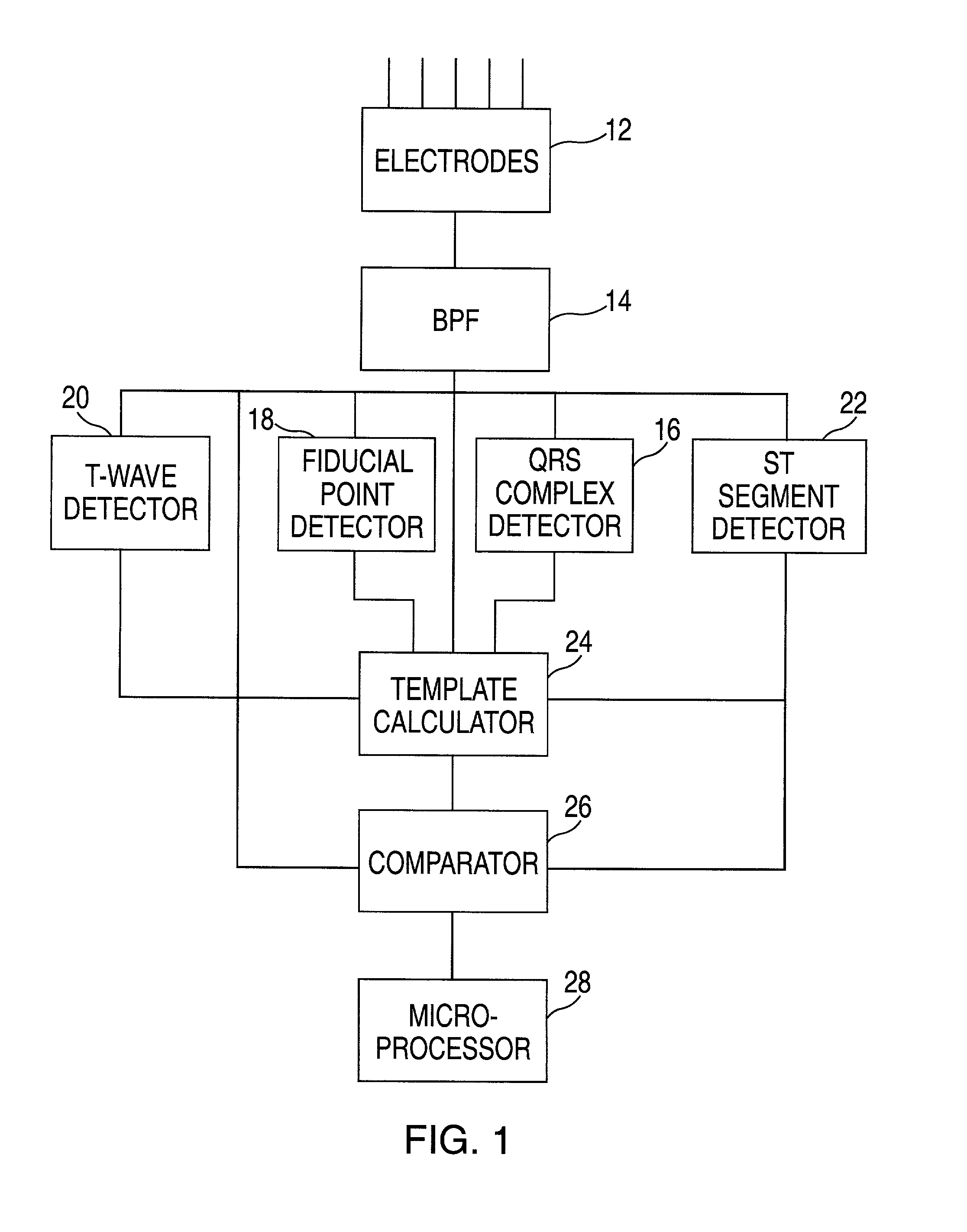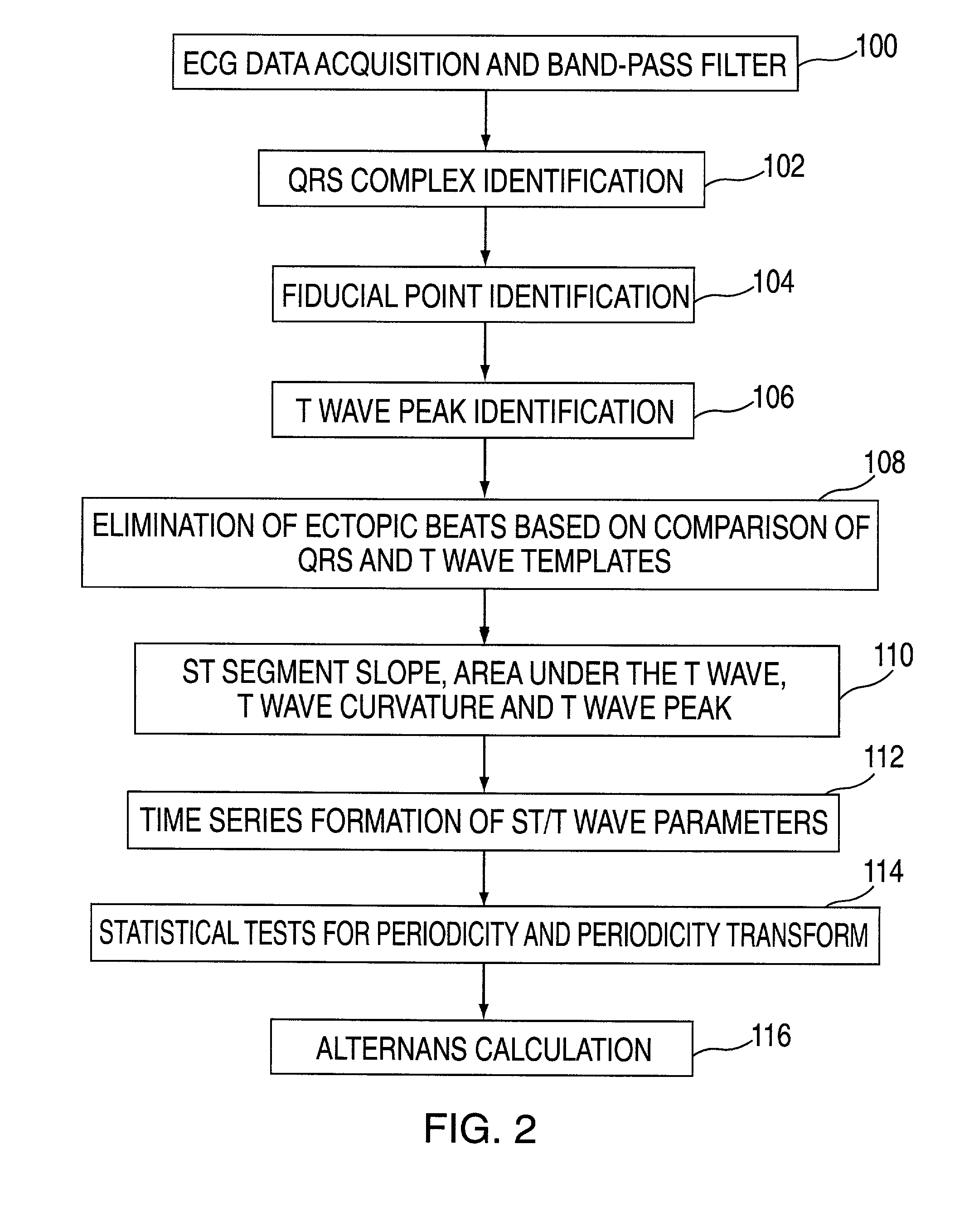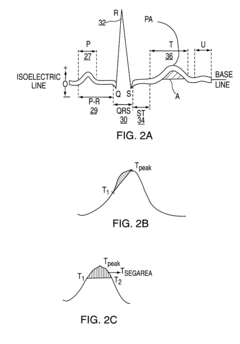The science of T wave inversion's role in acute cardiac management trends
AUG 19, 20259 MIN READ
Generate Your Research Report Instantly with AI Agent
Patsnap Eureka helps you evaluate technical feasibility & market potential.
T Wave Inversion Background and Objectives
T wave inversion is a critical electrocardiographic finding that has been the subject of extensive research and clinical interest in the field of cardiology. This phenomenon, characterized by the reversal of the normal T wave polarity in one or more leads of an electrocardiogram (ECG), has been recognized as a potential indicator of various cardiac conditions, ranging from benign to life-threatening.
The historical context of T wave inversion research dates back to the early 20th century when the ECG was first introduced as a diagnostic tool. Over the decades, our understanding of this ECG abnormality has evolved significantly, with numerous studies and clinical observations contributing to our current knowledge base. The importance of T wave inversion in acute cardiac management has grown exponentially, particularly in the context of identifying and managing acute coronary syndromes, myocardial ischemia, and other cardiac emergencies.
Recent technological advancements in ECG recording and analysis have further enhanced our ability to detect and interpret T wave inversions accurately. Machine learning algorithms and artificial intelligence applications are now being developed to assist clinicians in rapid and precise identification of these ECG changes, potentially improving the speed and accuracy of diagnosis in acute cardiac settings.
The primary objective of studying T wave inversion in the context of acute cardiac management is to improve patient outcomes through early detection and appropriate intervention. Researchers aim to elucidate the underlying mechanisms of T wave inversion, its relationship to various cardiac pathologies, and its prognostic significance in different clinical scenarios. This knowledge is crucial for developing evidence-based guidelines for the management of patients presenting with T wave inversions in emergency departments and cardiac care units.
Another key goal is to refine risk stratification strategies for patients with T wave inversions. By correlating T wave inversion patterns with clinical outcomes, researchers hope to identify high-risk subgroups that may benefit from more aggressive management or closer monitoring. This approach could potentially lead to more personalized treatment strategies and resource allocation in acute cardiac care.
Furthermore, the scientific community aims to standardize the interpretation and reporting of T wave inversions across different healthcare settings. This standardization is essential for conducting large-scale studies, comparing results across institutions, and developing universally applicable clinical protocols. As the field of acute cardiac management continues to evolve, the role of T wave inversion in guiding clinical decision-making is expected to become increasingly significant, necessitating ongoing research and education in this area.
The historical context of T wave inversion research dates back to the early 20th century when the ECG was first introduced as a diagnostic tool. Over the decades, our understanding of this ECG abnormality has evolved significantly, with numerous studies and clinical observations contributing to our current knowledge base. The importance of T wave inversion in acute cardiac management has grown exponentially, particularly in the context of identifying and managing acute coronary syndromes, myocardial ischemia, and other cardiac emergencies.
Recent technological advancements in ECG recording and analysis have further enhanced our ability to detect and interpret T wave inversions accurately. Machine learning algorithms and artificial intelligence applications are now being developed to assist clinicians in rapid and precise identification of these ECG changes, potentially improving the speed and accuracy of diagnosis in acute cardiac settings.
The primary objective of studying T wave inversion in the context of acute cardiac management is to improve patient outcomes through early detection and appropriate intervention. Researchers aim to elucidate the underlying mechanisms of T wave inversion, its relationship to various cardiac pathologies, and its prognostic significance in different clinical scenarios. This knowledge is crucial for developing evidence-based guidelines for the management of patients presenting with T wave inversions in emergency departments and cardiac care units.
Another key goal is to refine risk stratification strategies for patients with T wave inversions. By correlating T wave inversion patterns with clinical outcomes, researchers hope to identify high-risk subgroups that may benefit from more aggressive management or closer monitoring. This approach could potentially lead to more personalized treatment strategies and resource allocation in acute cardiac care.
Furthermore, the scientific community aims to standardize the interpretation and reporting of T wave inversions across different healthcare settings. This standardization is essential for conducting large-scale studies, comparing results across institutions, and developing universally applicable clinical protocols. As the field of acute cardiac management continues to evolve, the role of T wave inversion in guiding clinical decision-making is expected to become increasingly significant, necessitating ongoing research and education in this area.
Clinical Demand Analysis
The clinical demand for understanding T wave inversion's role in acute cardiac management has been steadily increasing in recent years. This growing interest stems from the recognition that T wave inversion can be a crucial indicator of various cardiac conditions, particularly in acute settings. Emergency departments and cardiac care units are increasingly relying on accurate interpretation of T wave inversions to guide rapid decision-making and treatment strategies.
In the context of acute cardiac management, T wave inversion analysis has become an essential component of risk stratification for patients presenting with chest pain or other symptoms suggestive of acute coronary syndromes. The ability to quickly and accurately assess T wave morphology can significantly impact patient triage, resource allocation, and treatment initiation. This has led to a surge in demand for advanced electrocardiogram (ECG) interpretation systems and training programs focused on T wave analysis.
The market for cardiac monitoring devices and ECG interpretation software has expanded in response to this clinical need. Healthcare providers are seeking more sophisticated tools that can detect subtle T wave changes and provide real-time analysis to support clinical decision-making. This demand has driven innovation in both hardware and software solutions, with a focus on improving sensitivity and specificity in T wave inversion detection.
Furthermore, there is a growing emphasis on integrating T wave inversion analysis into broader cardiac risk assessment protocols. Clinicians are increasingly recognizing the value of combining T wave inversion data with other clinical parameters and biomarkers to enhance diagnostic accuracy and prognostic capabilities. This holistic approach has created a demand for comprehensive cardiac assessment platforms that incorporate T wave analysis as a key component.
The need for standardized guidelines and protocols for interpreting T wave inversions in acute settings has also become apparent. Professional medical societies and healthcare institutions are working to develop and implement evidence-based recommendations for T wave inversion assessment, further driving the demand for research and clinical validation studies in this area.
As telemedicine and remote patient monitoring continue to expand, there is an increasing need for reliable T wave inversion analysis in non-traditional healthcare settings. This has led to the development of portable ECG devices and mobile applications capable of detecting and interpreting T wave inversions, catering to the growing market for home-based and ambulatory cardiac monitoring.
In the context of acute cardiac management, T wave inversion analysis has become an essential component of risk stratification for patients presenting with chest pain or other symptoms suggestive of acute coronary syndromes. The ability to quickly and accurately assess T wave morphology can significantly impact patient triage, resource allocation, and treatment initiation. This has led to a surge in demand for advanced electrocardiogram (ECG) interpretation systems and training programs focused on T wave analysis.
The market for cardiac monitoring devices and ECG interpretation software has expanded in response to this clinical need. Healthcare providers are seeking more sophisticated tools that can detect subtle T wave changes and provide real-time analysis to support clinical decision-making. This demand has driven innovation in both hardware and software solutions, with a focus on improving sensitivity and specificity in T wave inversion detection.
Furthermore, there is a growing emphasis on integrating T wave inversion analysis into broader cardiac risk assessment protocols. Clinicians are increasingly recognizing the value of combining T wave inversion data with other clinical parameters and biomarkers to enhance diagnostic accuracy and prognostic capabilities. This holistic approach has created a demand for comprehensive cardiac assessment platforms that incorporate T wave analysis as a key component.
The need for standardized guidelines and protocols for interpreting T wave inversions in acute settings has also become apparent. Professional medical societies and healthcare institutions are working to develop and implement evidence-based recommendations for T wave inversion assessment, further driving the demand for research and clinical validation studies in this area.
As telemedicine and remote patient monitoring continue to expand, there is an increasing need for reliable T wave inversion analysis in non-traditional healthcare settings. This has led to the development of portable ECG devices and mobile applications capable of detecting and interpreting T wave inversions, catering to the growing market for home-based and ambulatory cardiac monitoring.
Current Challenges in T Wave Interpretation
The interpretation of T wave inversions in electrocardiograms (ECGs) remains a significant challenge in acute cardiac management. Despite advancements in ECG technology and analysis techniques, several factors contribute to the complexity of accurately interpreting T wave inversions and their clinical significance.
One of the primary challenges is the variability in T wave morphology across different individuals and cardiac conditions. T wave inversions can be a normal variant in some cases, particularly in certain ECG leads or specific patient populations. This inherent variability makes it difficult for clinicians to distinguish between benign and pathological T wave inversions, potentially leading to misdiagnosis or unnecessary interventions.
The multifactorial nature of T wave inversions further complicates their interpretation. Various cardiac and non-cardiac conditions can cause T wave inversions, including ischemia, electrolyte imbalances, medication effects, and structural heart diseases. Differentiating between these underlying causes based solely on T wave morphology can be challenging, often requiring additional clinical information and diagnostic tests.
Another significant challenge is the dynamic nature of T wave changes in acute cardiac events. T wave inversions may evolve rapidly during the course of an acute coronary syndrome, making it crucial to interpret them in the context of serial ECG recordings. However, obtaining and analyzing multiple ECGs in a timely manner can be logistically challenging in emergency settings.
The lack of standardized criteria for interpreting T wave inversions across different patient populations and clinical scenarios also poses a challenge. While guidelines exist for specific conditions, such as acute myocardial infarction, there is still considerable variability in how clinicians interpret T wave inversions in other contexts. This inconsistency can lead to differences in patient management and outcomes.
Furthermore, the integration of T wave inversion analysis with other ECG parameters and clinical data remains a challenge. While T wave inversions are an important marker, they should be interpreted in conjunction with other ECG findings, patient symptoms, and risk factors. Developing comprehensive algorithms that incorporate all these factors for accurate risk stratification is an ongoing area of research.
Lastly, the increasing use of automated ECG interpretation systems presents both opportunities and challenges. While these systems can assist in identifying T wave inversions, their accuracy in interpreting the clinical significance of these findings is still limited. Overreliance on automated interpretations without proper clinical correlation can lead to errors in diagnosis and management.
One of the primary challenges is the variability in T wave morphology across different individuals and cardiac conditions. T wave inversions can be a normal variant in some cases, particularly in certain ECG leads or specific patient populations. This inherent variability makes it difficult for clinicians to distinguish between benign and pathological T wave inversions, potentially leading to misdiagnosis or unnecessary interventions.
The multifactorial nature of T wave inversions further complicates their interpretation. Various cardiac and non-cardiac conditions can cause T wave inversions, including ischemia, electrolyte imbalances, medication effects, and structural heart diseases. Differentiating between these underlying causes based solely on T wave morphology can be challenging, often requiring additional clinical information and diagnostic tests.
Another significant challenge is the dynamic nature of T wave changes in acute cardiac events. T wave inversions may evolve rapidly during the course of an acute coronary syndrome, making it crucial to interpret them in the context of serial ECG recordings. However, obtaining and analyzing multiple ECGs in a timely manner can be logistically challenging in emergency settings.
The lack of standardized criteria for interpreting T wave inversions across different patient populations and clinical scenarios also poses a challenge. While guidelines exist for specific conditions, such as acute myocardial infarction, there is still considerable variability in how clinicians interpret T wave inversions in other contexts. This inconsistency can lead to differences in patient management and outcomes.
Furthermore, the integration of T wave inversion analysis with other ECG parameters and clinical data remains a challenge. While T wave inversions are an important marker, they should be interpreted in conjunction with other ECG findings, patient symptoms, and risk factors. Developing comprehensive algorithms that incorporate all these factors for accurate risk stratification is an ongoing area of research.
Lastly, the increasing use of automated ECG interpretation systems presents both opportunities and challenges. While these systems can assist in identifying T wave inversions, their accuracy in interpreting the clinical significance of these findings is still limited. Overreliance on automated interpretations without proper clinical correlation can lead to errors in diagnosis and management.
Current T Wave Inversion Management Approaches
01 Diagnostic indicator in cardiac conditions
T wave inversion plays a crucial role as a diagnostic indicator in various cardiac conditions. It can be a sign of myocardial ischemia, left ventricular hypertrophy, or other heart abnormalities. The presence and pattern of T wave inversion in different ECG leads can provide valuable information about the location and severity of cardiac issues.- Diagnostic indicator in cardiac conditions: T wave inversion plays a crucial role as a diagnostic indicator in various cardiac conditions. It can be a sign of myocardial ischemia, left ventricular hypertrophy, or other heart abnormalities. The presence and pattern of T wave inversion help clinicians assess the severity and location of cardiac issues, guiding further diagnostic and treatment decisions.
- Electrocardiogram (ECG) analysis and interpretation: T wave inversion is a key feature in ECG analysis and interpretation. Advanced algorithms and machine learning techniques are employed to detect and classify T wave inversions accurately. These methods enhance the sensitivity and specificity of ECG readings, aiding in the early detection of cardiac abnormalities and improving overall diagnostic accuracy.
- Risk stratification in cardiovascular diseases: The presence and characteristics of T wave inversion contribute to risk stratification in cardiovascular diseases. It helps in identifying patients at higher risk of adverse cardiac events, guiding clinical decision-making for preventive interventions and treatment strategies. This role is particularly important in managing patients with suspected coronary artery disease or those recovering from cardiac events.
- Monitoring of cardiac therapy effectiveness: T wave inversion patterns are used to monitor the effectiveness of cardiac therapies. Changes in T wave morphology can indicate improvement or deterioration in cardiac condition, helping clinicians adjust treatment plans. This role is crucial in assessing the response to medications, interventional procedures, or lifestyle modifications in patients with heart diseases.
- Predictive marker in athlete's heart syndrome: In the context of athlete's heart syndrome, T wave inversion serves as a predictive marker. It helps differentiate between physiological adaptations to intense training and pathological cardiac conditions. This role is essential in sports cardiology for ensuring the cardiovascular health and safety of athletes, guiding decisions on training intensity and competitive participation.
02 Risk stratification in cardiovascular diseases
T wave inversion is used in risk stratification for cardiovascular diseases. It can help identify patients at higher risk of adverse cardiac events, such as myocardial infarction or sudden cardiac death. The extent and persistence of T wave inversion may correlate with the severity of underlying heart disease and prognosis.Expand Specific Solutions03 Monitoring of cardiac therapy effectiveness
T wave inversion patterns can be used to monitor the effectiveness of cardiac therapies. Changes in T wave morphology over time may indicate improvement or deterioration in cardiac function, helping clinicians adjust treatment strategies for patients with heart conditions.Expand Specific Solutions04 Identification of specific cardiac pathologies
Specific patterns of T wave inversion can help identify particular cardiac pathologies. For example, global T wave inversion may suggest takotsubo cardiomyopathy, while localized inversions in certain leads may indicate regional myocardial issues or electrolyte imbalances.Expand Specific Solutions05 Prognostic marker in acute coronary syndromes
In acute coronary syndromes, T wave inversion serves as an important prognostic marker. The presence, extent, and evolution of T wave inversions can provide insights into the severity of coronary artery disease and help predict short-term and long-term outcomes for patients.Expand Specific Solutions
Key Players in Cardiac Diagnostics
The science of T wave inversion in acute cardiac management is in a dynamic phase of development, with a growing market driven by increasing cardiovascular disease prevalence. The technology's maturity varies across applications, with established players like Medtronic and Welch Allyn leading in traditional ECG devices. Emerging companies such as Mindray and Biocare are advancing digital ECG technologies, while research institutions like Beth Israel Deaconess Medical Center and Shanghai Jiao Tong University are pushing boundaries in AI-assisted ECG analysis. The competitive landscape is diverse, spanning multinational corporations, specialized medical device manufacturers, and innovative startups, reflecting the field's multifaceted nature and potential for further growth.
Medtronic, Inc.
Technical Solution: Medtronic has developed advanced algorithms for T wave inversion detection in their cardiac monitoring devices. Their technology utilizes machine learning techniques to analyze ECG patterns and identify subtle changes in T wave morphology[1]. The system incorporates real-time data processing to provide immediate alerts to healthcare providers when significant T wave inversions are detected. Medtronic's approach also includes a comprehensive database of T wave inversion patterns associated with various cardiac conditions, allowing for more accurate interpretation and risk stratification[2]. Their devices can differentiate between benign and pathological T wave inversions, reducing false alarms and improving clinical decision-making in acute cardiac management[3].
Strengths: Advanced machine learning algorithms, real-time processing, and comprehensive T wave inversion database. Weaknesses: May require frequent updates to maintain accuracy and could be computationally intensive for portable devices.
Shenzhen Mindray Bio-Medical Electronics Co., Ltd.
Technical Solution: Mindray has developed a comprehensive T wave inversion analysis system for their patient monitoring devices. Their technology incorporates multi-lead ECG analysis to provide a more complete picture of cardiac electrical activity. Mindray's approach uses advanced pattern recognition algorithms to identify various types of T wave inversions, including those associated with ischemia, electrolyte imbalances, and other cardiac pathologies[8]. The system also features trend analysis capabilities, allowing healthcare providers to track changes in T wave morphology over time. Mindray's devices include a risk stratification tool that combines T wave inversion data with other clinical parameters to assist in acute cardiac management decisions[9].
Strengths: Multi-lead ECG analysis, trend tracking capabilities, and integrated risk stratification tools. Weaknesses: May require significant computational resources and could be more suitable for hospital settings than pre-hospital care.
Innovative T Wave Inversion Research
Methods and systems for detecting the presence of T-wave alternans
PatentInactiveUS7881792B1
Innovation
- An implantable cardiac device system that detects intrinsic or induced premature contractions of the ventricles and measures T-wave metrics to determine the presence of T-wave alternans, allowing for continuous monitoring without the need for surface ECGs or extensive computational resources.
Method and apparatus for monitoring cardiac patients for T-wave alternans
PatentInactiveUS6983183B2
Innovation
- A method using statistical detection of periodicity and periodicity transforms to estimate the presence or absence of alternans, which is more robust to phase reversals and non-stationarity, allowing for real-time calculation and easy implementation in existing monitors or cardioverter-defibrillators.
Regulatory Framework for Cardiac Diagnostics
The regulatory framework for cardiac diagnostics plays a crucial role in shaping the landscape of acute cardiac management, particularly in relation to T wave inversion interpretation. Regulatory bodies such as the Food and Drug Administration (FDA) in the United States and the European Medicines Agency (EMA) in Europe have established guidelines and standards for the development, validation, and implementation of cardiac diagnostic tools and techniques.
These regulatory frameworks ensure that diagnostic methods, including those used for T wave inversion analysis, meet stringent safety and efficacy requirements. They mandate rigorous clinical trials and evidence-based approaches to validate the accuracy and reliability of diagnostic tools. This process helps to minimize the risk of misdiagnosis and ensures that healthcare providers have access to reliable information for making critical decisions in acute cardiac care.
In recent years, regulatory bodies have increasingly focused on the integration of artificial intelligence (AI) and machine learning algorithms in cardiac diagnostics. This shift has led to the development of new guidelines for the validation and approval of AI-powered diagnostic tools, which have shown promise in enhancing the accuracy of T wave inversion interpretation and risk stratification in acute cardiac settings.
The regulatory framework also addresses the standardization of electrocardiogram (ECG) interpretation, including specific criteria for T wave inversion analysis. These standards help ensure consistency in diagnosis across different healthcare settings and geographical regions, facilitating more effective communication and collaboration among healthcare professionals.
Furthermore, regulatory bodies have established requirements for the continuous monitoring and reporting of adverse events related to cardiac diagnostic tools. This post-market surveillance helps identify potential issues and allows for rapid intervention to maintain patient safety and improve diagnostic accuracy over time.
The evolving nature of cardiac diagnostics, particularly in the context of T wave inversion's role in acute cardiac management, has prompted regulatory bodies to adopt more flexible and adaptive approaches. These include expedited review processes for innovative diagnostic technologies and the development of "regulatory sandboxes" that allow for controlled testing of novel approaches in real-world settings.
As the field of cardiac diagnostics continues to advance, regulatory frameworks are expected to evolve further, balancing the need for innovation with patient safety and clinical efficacy. This ongoing adaptation will be crucial in supporting the development and implementation of more sophisticated and accurate diagnostic tools for T wave inversion analysis and other aspects of acute cardiac management.
These regulatory frameworks ensure that diagnostic methods, including those used for T wave inversion analysis, meet stringent safety and efficacy requirements. They mandate rigorous clinical trials and evidence-based approaches to validate the accuracy and reliability of diagnostic tools. This process helps to minimize the risk of misdiagnosis and ensures that healthcare providers have access to reliable information for making critical decisions in acute cardiac care.
In recent years, regulatory bodies have increasingly focused on the integration of artificial intelligence (AI) and machine learning algorithms in cardiac diagnostics. This shift has led to the development of new guidelines for the validation and approval of AI-powered diagnostic tools, which have shown promise in enhancing the accuracy of T wave inversion interpretation and risk stratification in acute cardiac settings.
The regulatory framework also addresses the standardization of electrocardiogram (ECG) interpretation, including specific criteria for T wave inversion analysis. These standards help ensure consistency in diagnosis across different healthcare settings and geographical regions, facilitating more effective communication and collaboration among healthcare professionals.
Furthermore, regulatory bodies have established requirements for the continuous monitoring and reporting of adverse events related to cardiac diagnostic tools. This post-market surveillance helps identify potential issues and allows for rapid intervention to maintain patient safety and improve diagnostic accuracy over time.
The evolving nature of cardiac diagnostics, particularly in the context of T wave inversion's role in acute cardiac management, has prompted regulatory bodies to adopt more flexible and adaptive approaches. These include expedited review processes for innovative diagnostic technologies and the development of "regulatory sandboxes" that allow for controlled testing of novel approaches in real-world settings.
As the field of cardiac diagnostics continues to advance, regulatory frameworks are expected to evolve further, balancing the need for innovation with patient safety and clinical efficacy. This ongoing adaptation will be crucial in supporting the development and implementation of more sophisticated and accurate diagnostic tools for T wave inversion analysis and other aspects of acute cardiac management.
AI Integration in T Wave Interpretation
The integration of artificial intelligence (AI) in T wave interpretation represents a significant advancement in acute cardiac management. AI algorithms have demonstrated remarkable capabilities in analyzing electrocardiogram (ECG) data, particularly in detecting and interpreting T wave inversions, which are crucial indicators of potential cardiac issues.
Machine learning models, particularly deep neural networks, have been developed to automatically identify T wave inversions with high accuracy. These models are trained on large datasets of ECG recordings, enabling them to recognize subtle patterns that may be challenging for human interpreters to detect consistently. The AI-driven analysis can provide rapid and reliable assessments, potentially reducing the time to diagnosis and treatment initiation in acute cardiac events.
One of the key advantages of AI integration is its ability to process vast amounts of ECG data in real-time. This capability is particularly valuable in emergency settings, where quick and accurate interpretation of T wave inversions can be critical for patient outcomes. AI systems can continuously monitor ECG readings, alerting healthcare providers to significant changes that may indicate the onset or progression of cardiac issues.
Furthermore, AI algorithms have shown promise in predicting future cardiac events based on T wave inversion patterns. By analyzing historical ECG data and patient outcomes, these systems can identify subtle precursors to acute cardiac events, potentially enabling earlier interventions and improved patient management strategies.
The integration of AI in T wave interpretation also facilitates the standardization of ECG analysis across healthcare settings. This consistency can help reduce inter-observer variability and improve the overall quality of cardiac care. Additionally, AI systems can serve as valuable educational tools, assisting in the training of medical professionals by providing detailed explanations of T wave inversion patterns and their clinical significance.
As AI technology continues to evolve, there is potential for more sophisticated integration with other clinical data sources. This could lead to comprehensive risk assessment models that consider T wave inversions alongside other cardiac markers, patient history, and genetic factors. Such holistic approaches could significantly enhance the precision of acute cardiac management strategies.
However, it is important to note that while AI shows great promise in T wave interpretation, it is not intended to replace human expertise. Rather, it serves as a powerful tool to augment clinical decision-making, providing rapid, data-driven insights to support healthcare professionals in delivering optimal cardiac care.
Machine learning models, particularly deep neural networks, have been developed to automatically identify T wave inversions with high accuracy. These models are trained on large datasets of ECG recordings, enabling them to recognize subtle patterns that may be challenging for human interpreters to detect consistently. The AI-driven analysis can provide rapid and reliable assessments, potentially reducing the time to diagnosis and treatment initiation in acute cardiac events.
One of the key advantages of AI integration is its ability to process vast amounts of ECG data in real-time. This capability is particularly valuable in emergency settings, where quick and accurate interpretation of T wave inversions can be critical for patient outcomes. AI systems can continuously monitor ECG readings, alerting healthcare providers to significant changes that may indicate the onset or progression of cardiac issues.
Furthermore, AI algorithms have shown promise in predicting future cardiac events based on T wave inversion patterns. By analyzing historical ECG data and patient outcomes, these systems can identify subtle precursors to acute cardiac events, potentially enabling earlier interventions and improved patient management strategies.
The integration of AI in T wave interpretation also facilitates the standardization of ECG analysis across healthcare settings. This consistency can help reduce inter-observer variability and improve the overall quality of cardiac care. Additionally, AI systems can serve as valuable educational tools, assisting in the training of medical professionals by providing detailed explanations of T wave inversion patterns and their clinical significance.
As AI technology continues to evolve, there is potential for more sophisticated integration with other clinical data sources. This could lead to comprehensive risk assessment models that consider T wave inversions alongside other cardiac markers, patient history, and genetic factors. Such holistic approaches could significantly enhance the precision of acute cardiac management strategies.
However, it is important to note that while AI shows great promise in T wave interpretation, it is not intended to replace human expertise. Rather, it serves as a powerful tool to augment clinical decision-making, providing rapid, data-driven insights to support healthcare professionals in delivering optimal cardiac care.
Unlock deeper insights with Patsnap Eureka Quick Research — get a full tech report to explore trends and direct your research. Try now!
Generate Your Research Report Instantly with AI Agent
Supercharge your innovation with Patsnap Eureka AI Agent Platform!
